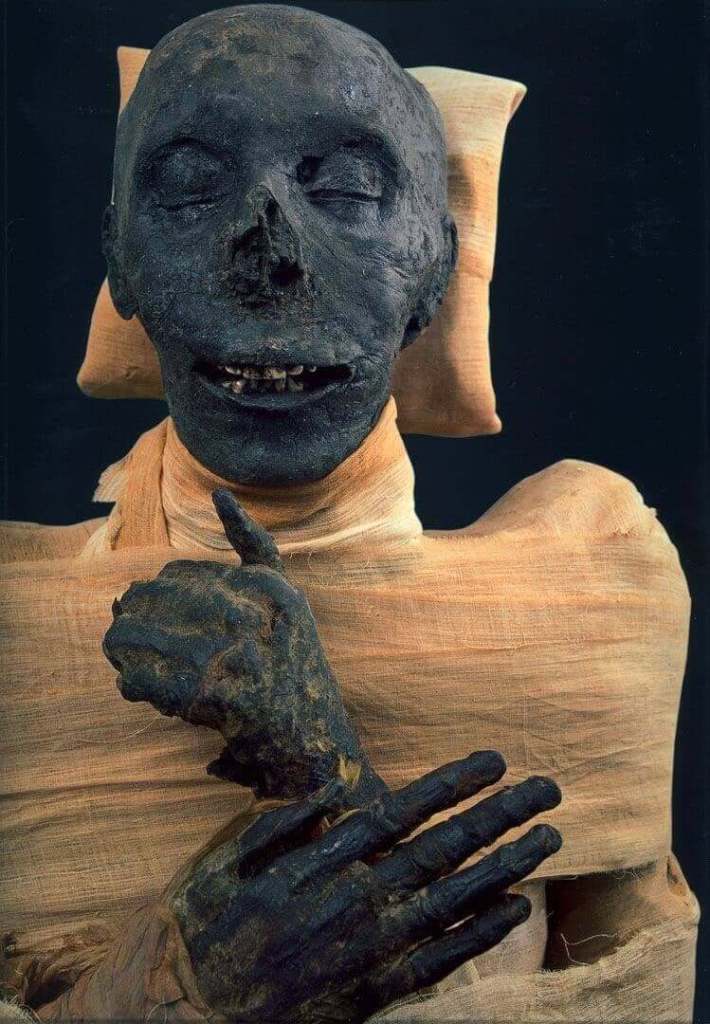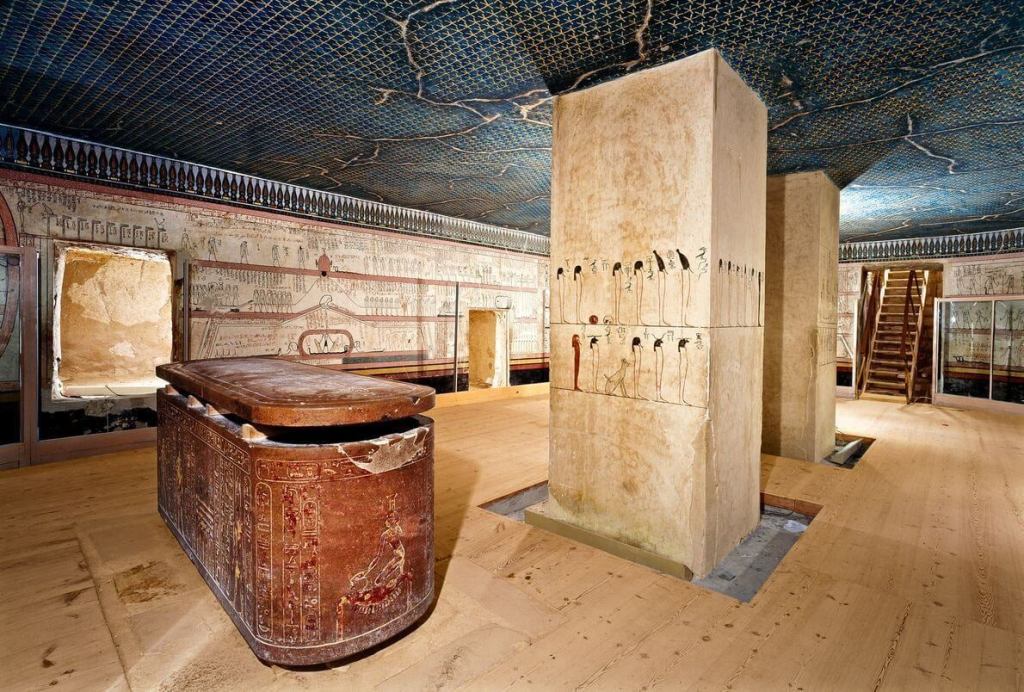The monarch, who was determined to make his imprint on his burgeoning kingdom, was very active across Egypt and Nubia.
 Mummy of Thutmose III
Mummy of Thutmose III
Photo: Patrick Landmann
He oversaw Egypt’s participation in at least 17 significant military expeditions. Moreover, he left behind traces of extensive architectural projects, like as the “Akh-Menu,” a temple in the Amun-Re precinct at Karnak, where he carved a king list listing the names of his forebears.
Perhaps in the 21st Dynasty, tomb raiders severely destroyed the corpse (ca. 1069-945 BC). They had to employ tiny wooden splints to hold the royal mummies’ bodies together as they were relocated. The body’s macroscopic measurements revealed a height of about 1.63 m (5 feet 414 inches). He was in the Osirian pose with his hands crossed over his chest.
Amenhotep II, the son of Thutmose’s second wife Merytre-Hatshepsut, was named coregent during the latter years of his life. After he passed away, he was buried in a secluded area in the western Thebes Valley of the Kings.
Thutmose III is arguably the pharaoh of ancient Egypt who, to a modern historian, most closely resembles a living person. His writings, although being written in boastful and exaggerated words considered appropriate for a king’s accomplishments, leave no question regarding his skills as a soldier and a politician, as well as his athletic prowess and his ability to hunt lions, wild cattle, and elephants.
He was a short man, standing no more than five feet three inches (1.6 meters), according to his mummy. His statues depict a smooth, young face with a big, high-bridged nose and a cheerful mouth.
Military Excellence
Thutmose III frequently displayed his military might, whether it be in Nubia, Phoenician ports, the important commercial hub of Kadesh, the kingdom of Mitanni, modern-day Syria, or Turkey. More land was conquered by him during the course of 17 wars than by any previous monarch.
He eventually had the biggest kingdom Egypt has ever seen. Compared to Alexander the Great and Julius Caesar, he fought more conflicts over a longer period of time and won more wins.
In addition to his numerous military triumphs, Thutmose III’s rule saw a flourishing of both art and architecture. Almost 50 temples, monuments, and other buildings were built under his orders. As comparison to other kings, he made the Temple of Karnak, a building housing multiple Egyptian gods, the most contribution.
A passion for the natural world
Thutmose III was particularly well-known for his fascination with the natural world; in Karnak, he ordered the creation of the “botanical garden,” a room that was adorned with pictures of the exotic plants and animals he and his soldiers had come across during their foreign adventures. He reigned over a powerful and rich Egypt for 54 years, including the time he shared the throne with Hatshepsut.
 Interior of the Tomb of Thutmose III
Interior of the Tomb of Thutmose III
Legacy and Treasury
The artwork on Thutmose III’s tomb (KV34) in the Valley of the Kings is noteworthy because it depicts the sun god’s journey through the night’s 12 hours in a manner reminiscent of papyrus drawings. His original coffin, which is still there in his burial chamber, is designed like a cartouche. He was later transported to the mummy cache at Deir el-Bahari, like many of the other royal mummies.
The expertise of Thutmose’s painters reached new heights, and tombs during his reign were the first to be totally painted rather than painted reliefs.
Thutmose III became the richest man in the world at the time thanks to the military campaign’s gains, which included loot, taxes, and tribute. Yet from his conquered countries, he also obtained human capital.
The sons of captured kings were sent to Egypt to get a court education. Having adapted to Egyptian culture, the children went back to their homes with support for Egyptian rule.
Contrary to Ramesses II, one of his later successors, who overstated his military prowess, Thutmose III earned the victories commemorated on the numerous monuments he constructed. On the sanctuary walls of the enormous Temple of Amun-Re at Karnak, his chronicles were engraved.
Thutmose III’s rule during the New Kingdom’s 18th Dynasty, around 1458–1425 BC. Now in Cairo’s NMEC, the National Museum of Egyptian Culture. CG 61068
King Thutmose IV was young when he passed away and was buried in the Valley of the Kings. Later, the mummy was relocated with other royal mummies to the Deir el-Bahari Cachette (DB320). His feet were broken off but not lost, and his corpse was rewrapped in its original bandages. Thutmose IV’s mummified remains

